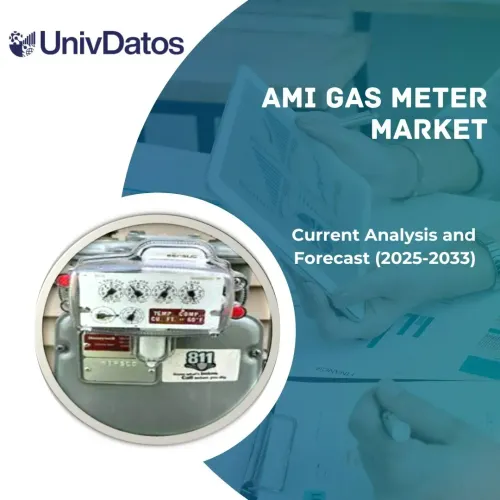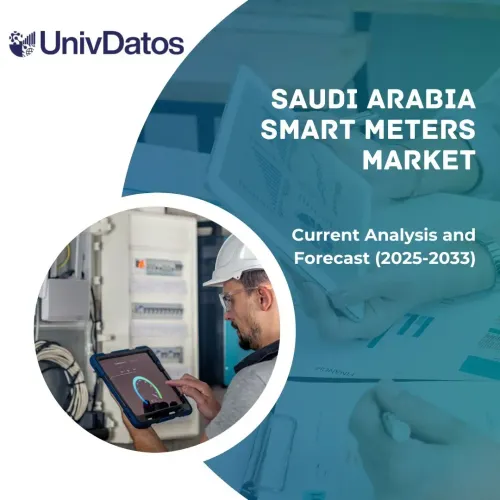- Home
- About Us
- Industry
- Services
- Reading
- Contact Us
Instrument Transformation Market: Current Analysis and Forecast (2021-2027)
Emphasis on Type (Current Transformers, Potential Transformers, Combined Instrument Transformers); Voltage (Distribution Voltage, Sub-Transmission Voltage, High Voltage Transmission, Extra High Voltage Transmission, Ultra-High Voltage Transmission); Application (Transformer and Circuit Breaker Bushing, Switchgear Assemblies, Relaying, Metering and Protection); End-User (Power Utilities, Power Generation, Railways and Metros, Industries and OEMs); and Region/Country
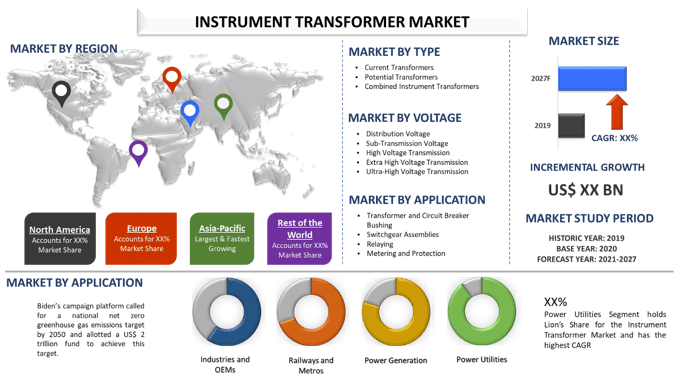
Instrument Transformer Market is expected to grow at a significant CAGR of ~7% during the forecast period (2021-2027). The measurement of high-level electrical quantities can be done using a device namely instrument transformer. These transformers play an essential role in current power systems. Voltages and currents within a power system are very large, because of this direct measurement of voltage and magnitude with high magnitude is not possible. Because of that we need to measure instruments of voltage and magnitude with high magnitude is not possible. So we need measuring instruments which have a high range of measurements or there is another technique like using the property of conversion within AC currents as well as voltages. A transformer is used to transform the current or voltage down when it turns ration is known after that determining the stepped down when turns ration is known after that determining the stepped down magnitude using a usual range of the device. The unique magnitude is decided by simply multiplying the outcome with the conversion ratio. Transformers like these have a precise turn ration as instrument transformer.
Instrument transformers like CTs or current transformers play an essential role while monitoring and protecting electrical power systems. These types of instrument transformers mainly used for changing the current to a diminished secondary current by using relays, meters, control devices and other instruments. Testing of an instrument transformer is essential when metering, mixing up connections and protection fault occurs otherwise in high degree of exactness and can be reduced drastically. Simultaneously electrical changes within a current transformer will occur. Due to these reasons, it is necessary to verify and adjust current transformers along with their connected devices at normal intervals. There are some electrical tests employed for these transformers which ensures the exactness and optimal service reliability like ratio, polarity, excitation, insulation, winding and burden test.
Advantages and Disadvantages of Instrument Transformers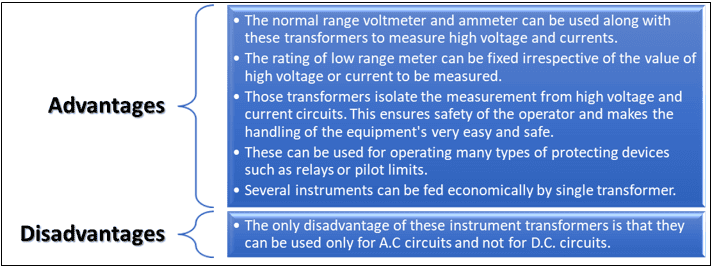
ABB, General Electric, Siemens, Schneider Electric, CG Power and Industrial Solutions Limited, Eaton Corporation, Toshiba Corporation, Bharat Heavy Electricals Limited, Mitsubishi Electric Corporation, and Raychem RPG Private Limited are some of the prominent players operating in the Instrument Transformer market. Several M&As along with partnerships have been undertaken by these players to facilitate customers with hi-tech and innovative products/technologies.
Insights Presented in the Report
“Amongst Type, Current Transformers segment holds the major share”
Based on Type, the Instrument Transformer Market is segmented into Current Transformers, Potential Transformers, and Combined Instrument Transformers. Current transformers are devices which can measure currents above 5A. The current Rating of the primary winding of a current transformer is determined by the maximum value of the load current to be measured. For example, if the current Rating is 400 A with a secondary rating of 5A, the ratio between the primary and secondary is 400:5, or 80:1.
“Amongst Voltage, High Voltage Transmission Segment holds the major share”
Based on Type, the Instrument Transformer Market is segmented into Distribution Voltage, Sub-Transmission Voltage, High Voltage Transmission, Extra High Voltage Transmission, and Ultra-High Voltage Transmission. High Voltage Direct Current (HVDC) electric power transmission system uses direct current (DC) for the transmission of electrical power, in contrast with the more common alternating current (AC) systems. Most HVDC typically uses voltages between 100 kV and 800 kV. However, a 1,100 kV link in China was completed in 2019 over a distance of 3,300 km with a power capacity of 12 GW.
“Amongst Application, Metering and Protection segment holds the major share”
Based on Application, the Instrument Transformer market is segmented into Transformer and Circuit Breaker Bushing, Switchgear Assemblies, Relaying, and Metering and Protection. Metering CTs work much like portable clamp-on ammeters, except they usually have more range. They can monitor current flow and give you reading of the current usage. Metering CTs work much like portable clamp-on ammeters, except they usually have more range.
“Amongst End-User, Power Utilities segment holds the major share”
Based on Application, the Instrument Transformer market is segmented into Power Utilities, Power Generation, Railways and Metros, and Industries and OEMs. Amongst Application, the Power Utilities segment dominated the market in 2020. The United States Power Utilities industry led the clean energy transition in 2020 despite federal policy headwinds. Pressure from stakeholders ranging from citizens to shareholders intensified in the past year which closely followed the recommendations of the Paris Climate Accord.
“Asia-Pacific represents one of the largest markets of Instrument Transformer market”
For a better understanding of the market dynamics of the Instrument Transformer market, a detailed analysis was conducted for different regions across India including North America (US, Canada, Rest of North America), Europe (Germany, UK, France, Spain, Italy, Rest of Europe), Asia-Pacific (China, Japan, India, Australia, Rest of Asia-Pacific), Rest of World. Asia-Pacific dominated the market in 2020.
Reasons to buy this report:
- The study includes market sizing and forecasting analysis validated by authenticated key industry experts
- The report presents a quick review of overall industry performance at one glance
- The report covers an in-depth analysis of prominent industry peers with a primary focus on key business financials, product portfolio, expansion strategies, and recent developments
- Detailed examination of drivers, restraints, key trends, and opportunities prevailing in the industry
- The study comprehensively covers the market across different segments
- Deep dive regional level analysis of the industry
Customization Options:
Instrument Transformer market can further be customized as per the requirement or any other market segment. Besides this, UMI understands that you may have your own business needs, hence feel free to connect with us to get a report that completely suits your requirements.
Table of Content
Analyzing the historical market, estimation of the current market, and forecasting the future market of the Instrument Transformer market were the three major steps undertaken to create and analyze the adoption of Instrument Transformer in major regions globally. Exhaustive secondary research was conducted to collect the historical market numbers and estimate the current market size. Secondly, to validate these insights, numerous findings and assumptions were taken into consideration. Moreover, exhaustive primary interviews were also conducted, with industry experts across the value chain of the Instrument Transformer market. Post assumption and validation of market numbers through primary interviews, we employed a top-down/bottom-up approach to forecasting the complete market size. Thereafter, market breakdown and data triangulation methods were adopted to estimate and analyze the market size of segments and sub-segments the industry pertains to. Detailed methodology is explained below:
Analysis of Historical Market Size
Step 1: In-Depth Study of Secondary Sources:
Detail secondary study was conducted to obtain the historical market size of the Instrument Transformer through company internal sources such as annual report & financial statements, performance presentations, press releases, etc., and external sources including journals, news & articles, government publications, competitor publications, sector reports, third-party database, and other credible publications.
Step 2: Market Segmentation:
After obtaining the historical market size of the Instrument Transformer market, we conducted a detailed secondary analysis to gather historical market insights and share for different segments & sub-segments for major regions. Major segments included in the report as type, voltage, application, and end-user. Further country-level analyses were conducted to evaluate the overall adoption of Instrument Transformer in that region.
Step 3: Factor Analysis:
After acquiring the historical market size of different segments and sub-segments, we conducted a detailed factor analysis to estimate the current market size of Instrument Transformer. Further, we conducted factor analysis using dependent and independent variables such as increasing urbanization and electricity generation. A thorough analysis was conducted for demand and supply-side scenarios considering top partnerships, merger and acquisition, business expansion, and product launches in the Instrument Transformer sector across the globe.
Current Market Size Estimate & Forecast
Current Market Sizing: Based on actionable insights from the above 3 steps, we arrived at the current market size, key players in the Instrument Transformer market, and market shares of the segments. All the required percentage shares split, and market breakdowns were determined using the above-mentioned secondary approach and were verified through primary interviews.
Estimation & Forecasting: For market estimation and forecast, weights were assigned to different factors including drivers & trends, restraints, and opportunities available for the stakeholders. After analyzing these factors, relevant forecasting techniques i.e., top-down/bottom-up approach was applied to arrive at the market forecast about 2027 for different segments and sub segments across the major markets globally. The research methodology adopted to estimate the market size encompasses:
- The industry’s market size, in terms of value (US$) and the adoption rate of Instrument Transformer across the major markets domestically
- All percentage shares, splits, and breakdowns of market segments and sub-segments
- Key players in the Instrument Transformer market in terms of products offered. Also, the growth strategies adopted by these players to compete in the fast-growing market
Market Size and Share Validation
Primary Research: In-depth interviews were conducted with the Key Opinion Leaders (KOLs) including Top Level Executives (CXO/VPs, Sales Head, Marketing Head, Operational Head, and Regional Head, Country Head, etc.) across major regions. Primary research findings were then summarized, and statistical analysis was performed to prove the stated hypothesis. Inputs from primary research were consolidated with secondary findings, hence turning information into actionable insights.
Split of Primary Participants in Different Regions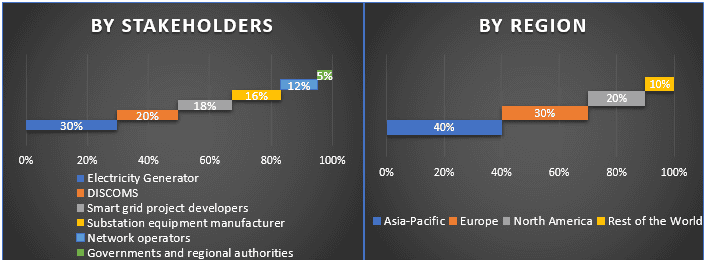
Market Engineering
Data triangulation technique was employed to complete the overall market estimation and to arrive at precise statistical numbers of each segment and sub-segment of the Instrument Transformer market. Data was split into several segments & sub-segments post studying various parameters and trends in the areas of type and their type of the Instrument Transformer market.
The main objective of the Instrument Transformer Market Study
The current & future market trends of Instrument Transformer were pinpointed in the study. Investors can gain strategic insights to base their discretion for investments from the qualitative and quantitative analysis performed in the study. Current and future market trends were determined the overall attractiveness of the market at a regional level, providing a platform for the industrial participant to exploit the untapped market to benefit as a first-mover advantage. Other quantitative goals of the studies include:
- Analyze the current and forecast market size of Instrument Transformer in terms of value (US$). Also, analyze the current and forecast market size of different segments and sub-segments
- Segments in the study include areas of type, voltage, application, and end-user
- Define and analysis of the regulatory framework for the Instrument Transformer industry
- Analyze the value chain involved with the presence of various intermediaries, along with analyzing customer and competitor behaviors of the industry
- Analyze the current and forecast market size of the Instrument Transformer market for the major region
- Major regions studied in the report include North America (US, Canada, Rest of North America), Europe (Germany, UK, France, Spain, Italy, Rest of Europe), Asia-Pacific (China, Japan, India, Australia, Rest of Asia-Pacific), Rest of World.
- Company profiles of the Instrument Transformer market and the growth strategies adopted by the market players to sustain in the fast-growing market
Deep dive regional level analysis of the industry
Related Reports
Customers who bought this item also bought







